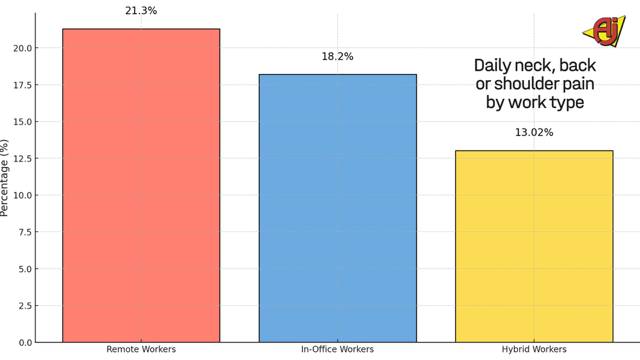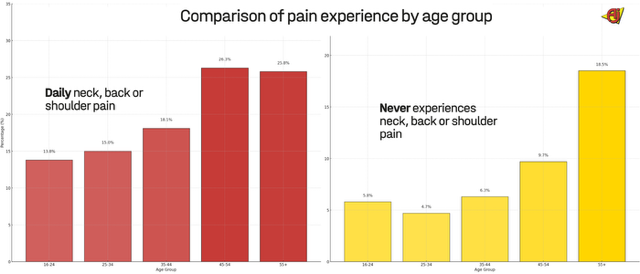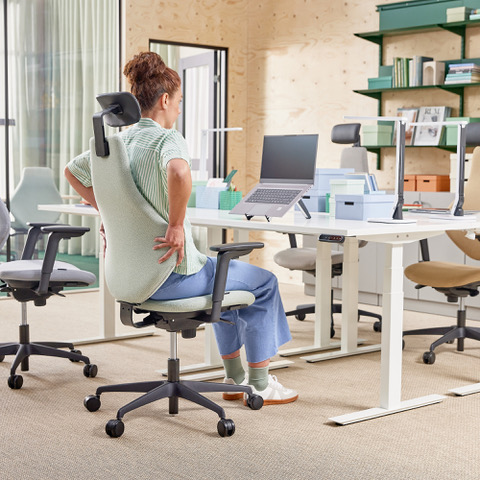A recent survey conducted by leading workplace product supplier AJ Products (UK) Ltd has revealed significant disparities in neck, shoulder and back pain among UK working adults. The findings show how age, location and work practices contribute to physical discomfort, raising concerns about workplace habits and the need for tailored health interventions.
 The survey reports that over 20% of UK adults experience daily neck, back or shoulder pain. It found that remote workers were the most affected group, reporting higher levels of discomfort than in-office or hybrid workers. These results demonstrate the value of proper posture, movement, ergonomic setups, and a more balanced approach to work and lifestyle.
The survey reports that over 20% of UK adults experience daily neck, back or shoulder pain. It found that remote workers were the most affected group, reporting higher levels of discomfort than in-office or hybrid workers. These results demonstrate the value of proper posture, movement, ergonomic setups, and a more balanced approach to work and lifestyle.
The survey also revealed that women were 1.5 times more likely than men to feel pain on a daily basis, with 26% of women experiencing pain every day compared to 16.4% of men. Raising concerns about biological factors, lifestyle differences and potential workplace disparities.

Regular desk breaks are widely recommended to improve focus, reduce stress and boost productivity; the survey found no direct link between taking breaks and a complete absence of physical discomfort. While breaks may not eliminate neck, shoulder or back pain, they remain essential for overall physical health and mental wellbeing.
Helen Beebe, Managing Director of AJ Products, expressed concern over the findings, “The availability of flexible working equipment and improved understanding of workplace wellness and ergonomics should eliminate pain from desk work. This data highlights the urgent need to prioritise workplace initiatives addressing physical and mental health. Businesses need to recognise that a one-size-fits-all approach to employee wellbeing may not be effective.”
KEY FINDINGS*
Neck, Shoulder, or Back Pain Frequency
21.3% of UK adults feel neck, back, or shoulder pain every day.
45-54 year olds are the most affected age group, with 26.3% experiencing pain daily.
Remote workers experience daily pain most frequently (21.3%), compared to 18.2% of in-office workers and 13.02% of hybrid workers.
Glasgow has the highest rate of daily pain, with 31.7% of residents affected.
Conversely, London has the lowest rate of daily pain, with only 14.9% affected.
*Using a demographically representative sample of 2,015 adults
The survey raises serious questions about why women and remote workers are disproportionately affected, suggesting gaps in workplace wellness practices across demographics. If left unaddressed, these differences could pose long-term risks to UK businesses.
The findings emphasise the need for a more targeted approach to support high-risk groups and promote workplace wellbeing. Businesses should be urged to take proactive steps to improve individual ergonomics, encourage regular movement, and foster a culture that prioritises employee health.




